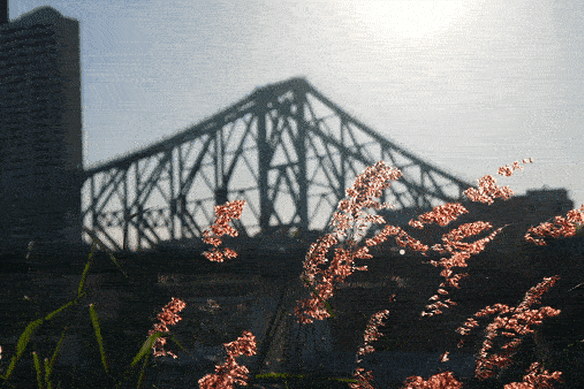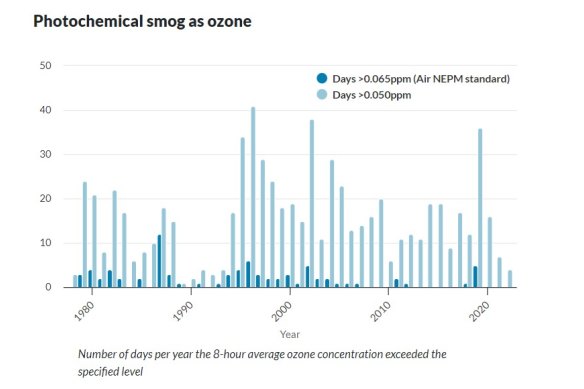This was published 1 year ago
The air in Brisbane is cleaner than other cities, but change is coming
By Tony Moore
Every morning, air flows into the city from the west, breezing down the Brisbane River and out to Moreton Bay. It picks up pollutants along the way, in a geographic weather phenomenon known as an airshed.
Over an afternoon, when the seabreeze pushes to shore, this air flows back towards Brisbane’s west and south, again carrying pollutants. It might help colour the sunset, but it also keeps ozone particles moving.
“All the time the airshed is passing over the city it is accumulating pollutants,” said Don Neale, science lead in the air-monitoring team at Queensland’s Department of Environment of Science.

According to federal government data, Brisbane’s air quality is among the best of any capital city.Credit: Adobe
“It is particularly relevant for what we call photochemical pollution, and ozone is the typical pollution that we measure.
“If you have a source of particles, then the particles will move in that pattern, backwards and forwards over the city.”
According to federal government data, Brisbane has some of the cleanest air of any capital city in Australia. Air quality has also improved in recent decades, largely because of the closure of nearby coal-fired power stations and an oil refinery, as well as higher environmental standards.
The most recent State of the Environment report, using 2015-19 data, assessed four-hour average ozone levels and found:
- Brisbane was classified ‘very good’, with a positive outlook;
- Sydney was classified ‘good’, with a negative outlook;
- Melbourne was classified ‘good’, with a negative outlook;
- Perth was classified ‘good’, with a negative outlook.
This is perhaps one of the reasons Brisbane has proved so popular with interstate migrants, as more people move to the city looking for cheaper houses and a better quality of life.
While Brisbane has enviable natural assets, it is not as developed as Sydney and Melbourne. That has its downsides for air quality, too. Without the same population density, serviced by an advanced public transport system, the Queensland capital is more reliant on a radial road network to and from the CBD.
According to Census data, Brisbane has more two- and three-car households than any other capital city, many of them on the suburban fringes, where trains and buses are rarely seen. Population growth means more people in more cars for longer.
While proponents of Cross River Rail and the Brisbane Metro expect the projects to increase public transport patronage, thus promoting a greener commute, their planning was done before the work-from-home revolution.
Ozone levels are still lower than they were 20 years ago, and the biggest threat to Brisbane’s air quality comes not from traffic or development but nature itself: bushfires.

Air quality data for Brisbane shows spikes in airborne particulates, most often due to smoke from bushfires and hazard reduction burns.Credit: Queensland Department of Environment and Science
“The levels of ozone are influenced by bushfires because when you burn eucalypt trees, especially, you get a lot of organic compounds that react and form ozone,” Neale said.
“You typically find higher levels of ozone on years when there are more bushfires around.”
Last year, hazard reduction burns left a smoke haze over Brisbane for days. People with respiratory conditions were urged to stay indoors, as authorities explained that the forecast of a hot, dry summer required them to act early to mitigate the impact of bushfires.
Bushland gives people a natural break, and helps clean the air. But climate change and more erratic weather mean a city as leafy as Brisbane is likely to experience more smoky days in future.
This article was produced in collaboration with the Australian Science Media Centre, with support from the Walkley Foundation-administered Meta Public Interest Journalism Fund.